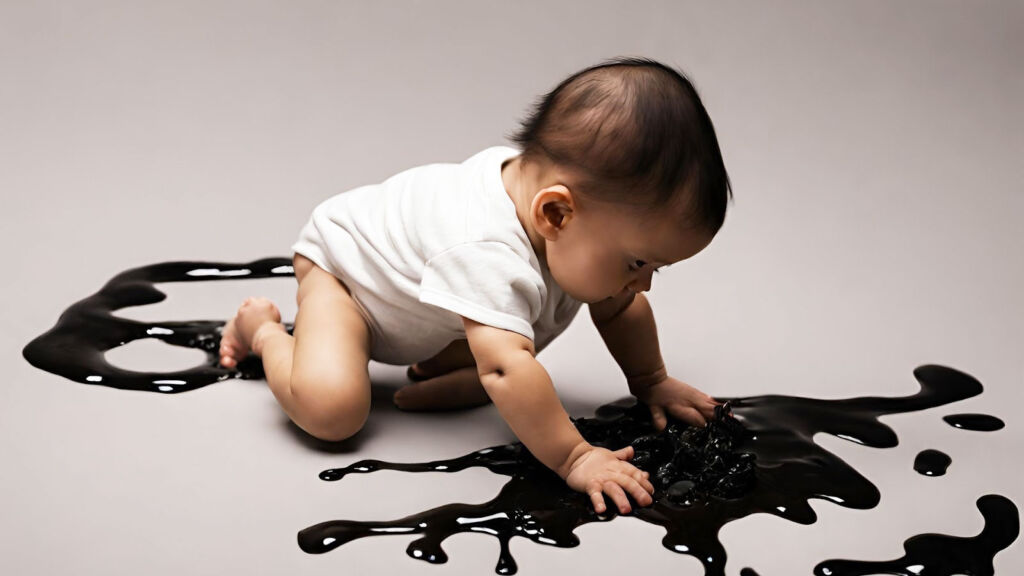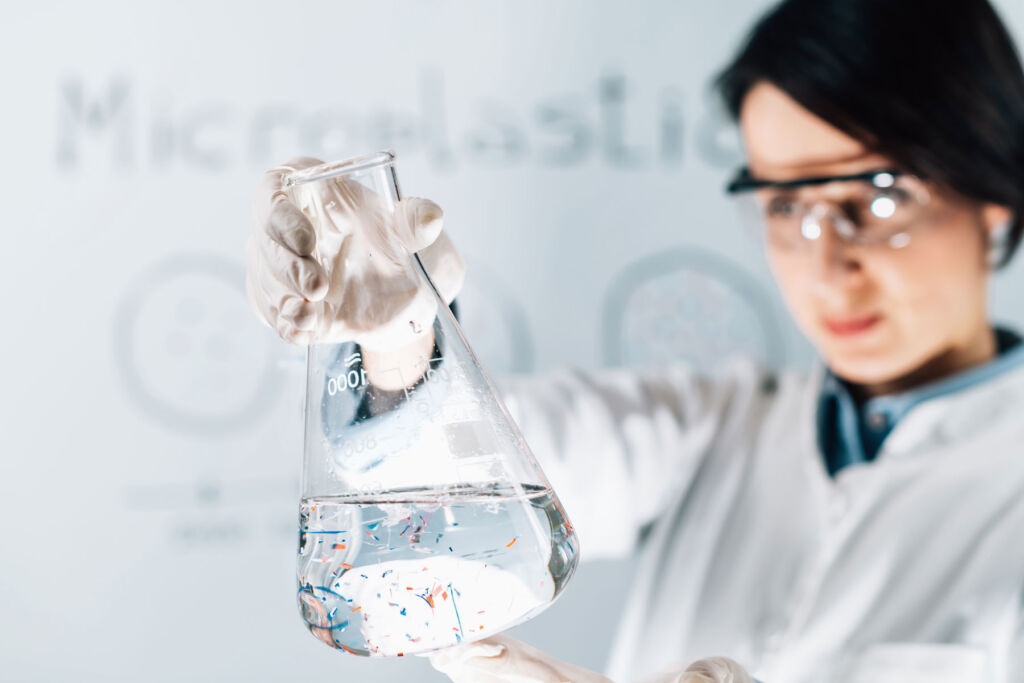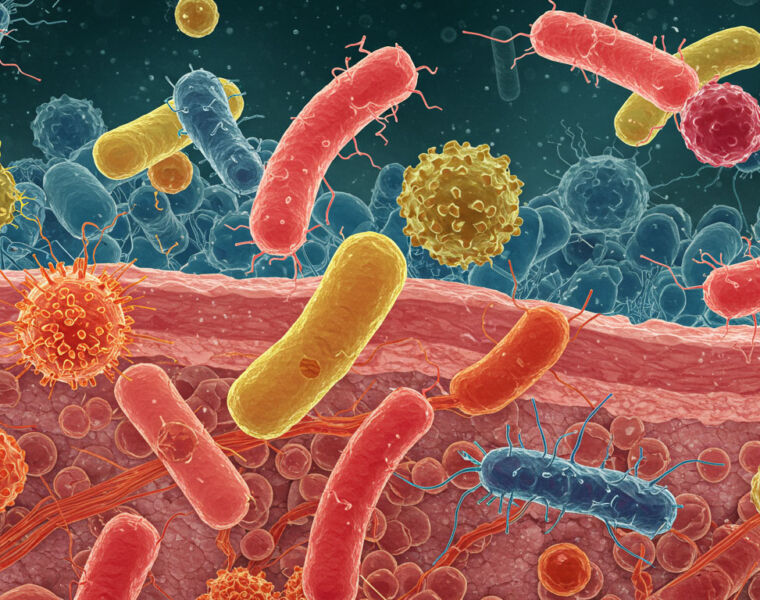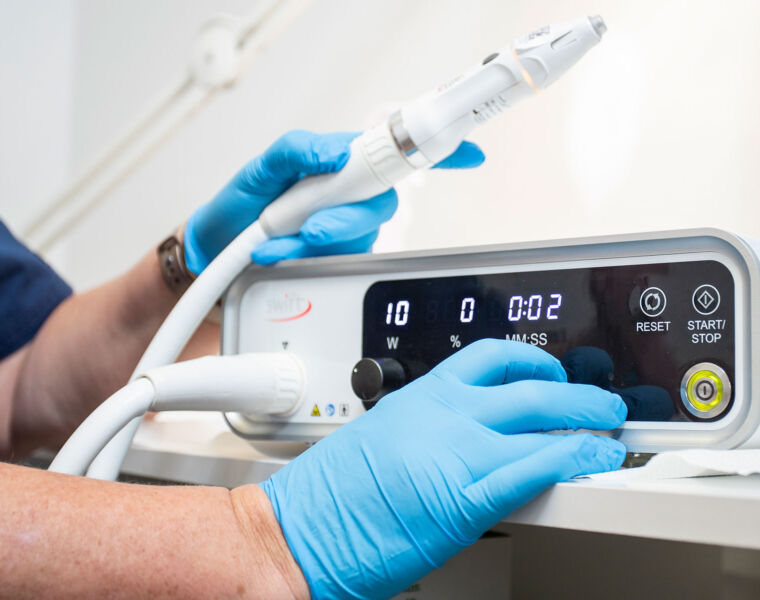
Plastics is not a subject that most of us go to sleep obsessing over or wake up consumed by. But when you are writing a report for EARTHDAY.ORG entitled, BABIES VS PLASTICS, plastics literally become your life.
Plastic is an omnipresent material in our lives. Made from oil and a selection of other, often toxic chemicals, plastics envelop our world: from wrapping our food to filling our homes with ‘stuff’ and now even creating the clothes we wear.
Yet, despite the prevalence of plastics, the health implications associated with them have remained largely absent from the media. Until now, that is. Finally, new research has started to gather much-needed evidence showcasing just how harmful exposure to plastics might be.
The world of microplastics is a complex puzzle of tiny plastic particles, not even acknowledged until 2004, when an oceanographer from Plymouth University, Prof. Richard Thompson, named them. His research showed they had been present in the world’s oceans since the 1960s, and now they are pretty much everywhere.

Microplastics are in the air we breathe, every body of water we interact with and in the food chain. It is impossible to escape their presence even if you set out to do just that.
One of the most shocking revelations in writing this report was that babies and infants appear to have over ten times higher rates of microplastics in their faeces samples than adults.
It’s not hard to figure out why – babies rely heavily on taste to decode their world, and that involves putting practically everything into their mouths. Including a lot of plastic toys, soothers and plastic bottles. Which means they are ingesting tiny plastic particles.
Scientists from Trinity College, Dublin, in Ireland, published a study in October 2020, which estimated infants could ingest up to 4.5 million plastic particles per day when fed from polypropylene baby bottles.
In a study from 2023, scientists found microplastics had been released into the disposable storage bags used for expressed breast milk.
They reported finding microplastics, most commonly polyethylene (PE), polyethylene terephthalate14 (PET), and nylon-6. This equates to between 0.61–0.89 mg/day of microplastics in the average daily breastmilk intake by infants drinking breast milk stored this way.
Another startling observation was that the dangers of plastic are found in higher concentrations indoors. Making our homes and workplaces potential hotbeds for exposure. The very spaces we consider safe and clean may be harbouring invisible threats with potential long-term health consequences. This is even more worrying when you consider that babies spend 90% of their time indoors.
From the age of 6 months to roughly a year, babies typically spend a great deal of time crawling on the ground as well, which means coming into contact with yet more microplastics in household dust. So, it is not hard to understand why babies are potentially predisposed to ingest and inhale microplastics at higher rates than adults.
One of the other surprising things that emerged from our study was the revelation that older microplastics, which have weathered the elements and undergone degradation, might be even more dangerous than their virgin counterparts.
As plastics break down over time, they can release harmful chemicals into the environment around them. That environment might be inside our own bodies.
Many of the additives that leach out include chemicals called phthalates or plasticizers, such as PFAS (Perfluoroalkyl and Polyfluoroalkyl Substances), which make plastics more flexible. Or chemical compounds like BPA (Bisphenol A), which make plastics more durable.
BPA is already classified as an Endocrine Disrupting Chemical (EDC), which means it comes with a whole host of health-related issues all of its own. All of these substances have been linked to various sorts of cancer.
The bad news does not stop there. Microplastics are also vectors for bacteria and viruses, as well as attracting heavy metals and other toxic chemicals that adsorb onto them. This could all have significant implications for human health.
The evidence against microplastics being safe to consume inadvertently is perhaps not surprisingly mounting, but there is a glaring lack of government regulations surrounding microplastics.
This regulatory failure raises questions about the extent to which fossil fuel corporations, who own the vast majority of the plastics industry, and their lobbyists influence how and what we regulate at a federal level.
The imbalance between corporate interests and public welfare is a huge and omnipresent concern that feels like it has a David and Goliath size imbalance hard-wired in. As plastic production is set to double by 2040, it’s one we cannot back away from.
If you want to get involved and be part of the movement that stands up to the fossil fuel-owned plastics industry, EARTHDAY.ORG invites you to sign our Global Plastics Treaty to call on the United Nations and governments around the world to commit to a 60% reduction of all fossil fuel-based plastic production by 2040.
The fight, Planet vs Plastics, has only just begun — it’s a fight we cannot afford to lose. The health of our children depends on it.
Author: Aidan Charron, Director, End Plastic Initiatives, EARTHDAY.ORG.
![]()




You must be logged in to post a comment.